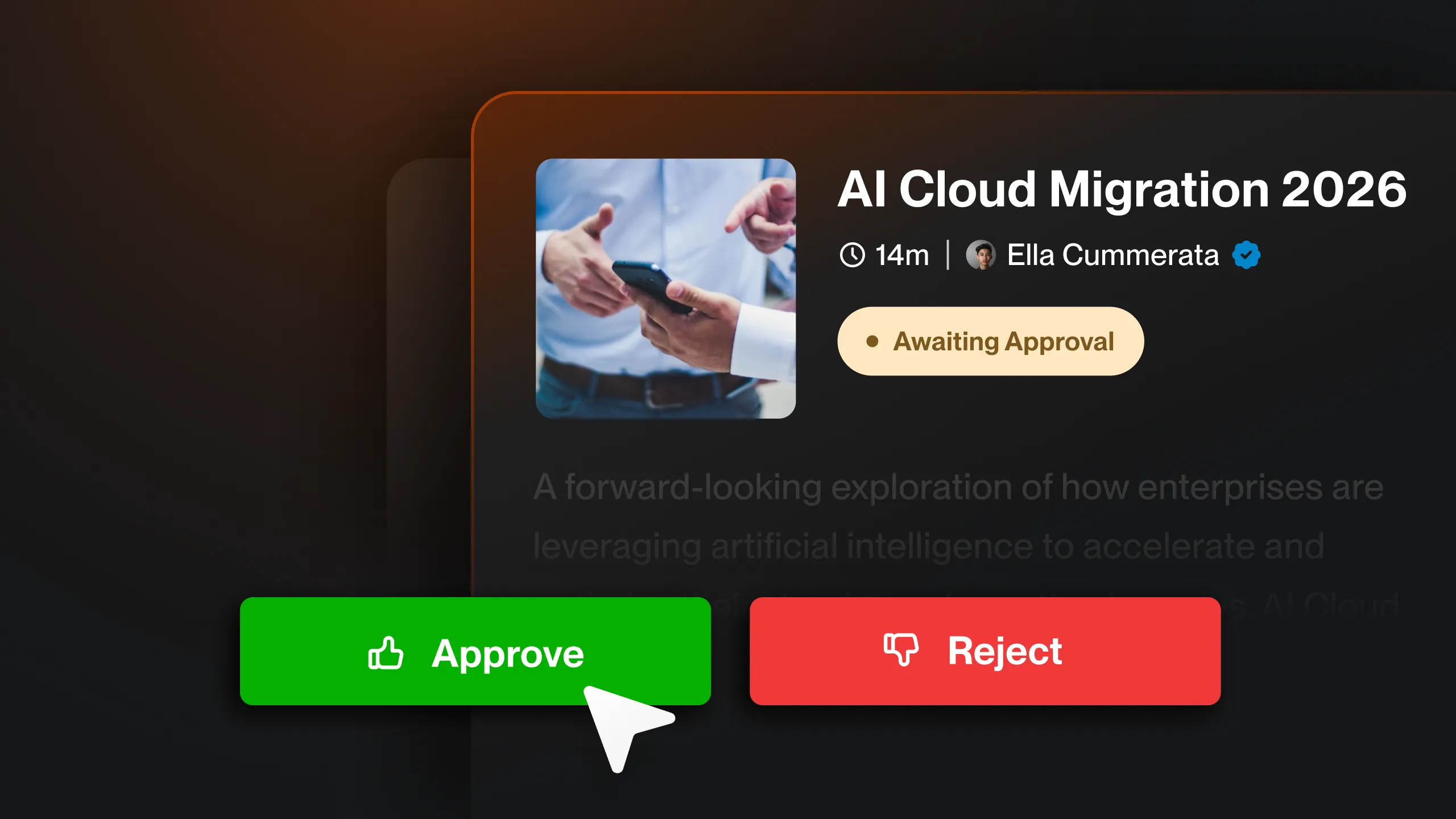Change Activation
Building a Self-Sustaining Change Agent Network in Passport Services
Sep 22, 2025
Written by
Curtis E. Hall II
COO of the Management Team at U.S. Department of State
Curtis E. Hall II is a transformative leader with over 24 years of experience guiding organizational change, project execution, and community empowerment. As the Chief Operations Officer for the Change Management Team within the U.S. Department of State’s Bureau of Consular Affairs, he bridges executive vision with practical execution, designing enterprise-wide frameworks that elevate transformation, sustainment, and adoption across Passport Services. His portfolio includes authoring strategic white papers, co-architecting national transformation workshops, and spearheading the Change Agent Network to embed ownership and accelerate adoption at scale.
Beyond federal service, Curtis is the Founder of Nu Collar Solutions LLC, where he blends change management, project management, and life coaching to empower individuals and organizations. His work spans corporate, community, and faith-based ecosystems—mentoring men, strengthening families, and cultivating resilience across diverse environments.
In today’s complex government environment, transformation cannot be sustained by strategy documents alone—it must live in the people who operationalize it. Passport Services (PPT), facing rising demand, evolving regulations, and heightened citizen expectations, recognized a truth often overlooked in federal change initiatives: lasting change requires distributed ownership, not centralized mandates.
This conviction gave birth to the Change Agent Network (CAN)—a grassroots-to-executive framework designed to embed change within every level of the organization. What started as a concept has matured into a structured, operationalized network that equips leaders, managers, and employees alike to not only implement change, but to sustain it long after the initial momentum fades.
Why a Change Agent Network?
Too often, government projects falter after rollout. Studies show that more than 70% of transformation initiatives across sectors fail to meet their objectives, largely due to lack of adoption, weak ownership, or poor sustainment practices. PPT was determined not to be part of that statistic.
Instead of approaching transformation as a series of disconnected projects, PPT sought to establish a repeatable, people-centered system that embedded accountability, knowledge-sharing, and continuous improvement into daily operations. CAN was the vehicle.
The business case was clear: without a network to de-risk transformation and sustain adoption, initiatives would collapse under their own weight. With CAN, the vision was different—an empowered, self-sustaining community of leaders that could drive modernization, reinforce cultural change, and deliver consistent value to both employees and citizens.
Formation: Grounding in Local Leadership
From inception, CAN rejected a top-down model. Instead, it embraced a “Local Leadership First” approach—anchoring change with assistant directors and frontline leaders before escalating upward. This design choice was critical: transformation only takes root when those closest to the work see themselves not as passive recipients, but as responsible owners.
A RACI-inspired framework clarified roles:
Responsible: Local leadership and teams
Accountable: Assistant Directors
Consulted: Transformation (CAN)
Informed: The broader community
This clarity avoided duplication, reduced confusion, and placed transformation where it belongs—within the business itself.
Rollout: Building Knowledge, Culture, and Engagement
CAN’s rollout was intentional and structured around five pillars:
1. Structured Knowledge Sharing – Teams channels and knowledge hubs organized by topic ensured that lessons, templates, and playbooks were accessible and reusable.
2. Rotating Host Model – Monthly rotating hosts built ownership, created leadership exposure, and distributed accountability for network vitality.
3. Engagement Rituals – Lightweight but meaningful practices like “hands-up checks,” kudos, and end-of-meeting reflections kept morale high and reinforced a sense of shared culture.
4. Feedback Loops – Quarterly surveys, pulse checks, and structured reflections provided a rhythm of intentional feedback to fuel continuous improvement.
5. Resource Kits – From RACI templates and takeaway guides to icebreaker decks and recognition frameworks, CAN members were equipped with tangible tools that lowered the barrier to engagement.
The rollout was not simply about launching meetings; it was about institutionalizing new ways of thinking, working, and leading change.
Operationalization: Embedding Sustainment into the DNA
CAN did not stop at engagement—it linked directly to PPT’s broader sustainment framework. Leveraging the Sustainment Rubric and Scorecard, projects were no longer declared “complete” at closure, but instead scored across eight critical dimensions:
Ownership & Accountability
Employee Adoption
Knowledge Transfer
Quality Monitoring
Stakeholder Feedback
Performance Impact
Risk Mitigation
Leadership Reinforcement
Scores determined sustainment status:
0–9: Unsustainable – Immediate intervention required
10–15: At Risk – Targeted improvement plan needed
16–21: Sustainable – Light monitoring
22–24: Optimized – Celebrate and archive
CAN became the living bridge between transformation and sustainment, ensuring that employee adoption, knowledge transfer, and leadership reinforcement were not afterthoughts but operationalized practices.
This alignment allowed CAN to move from being a “community of interest” into a force multiplier for strategic execution. Each host, steward, and local leader became part of a self-correcting ecosystem where lessons learned were shared, risks surfaced early, and performance gains monitored over time.
Lessons Learned Along the Way
Three lessons stand out for leaders considering their own CAN:
Role Clarity is Non-Negotiable – Without clear accountability, change agents risk duplicating efforts or working at cross-purposes.
Culture is Built in Small Moments – Kudos, reflections, and engagement rituals may seem minor, but they build the trust and energy that sustain transformation.
Feedback Must be Systematic, Not Sporadic – CAN’s quarterly survey and reflection cycle transformed feedback from anecdote into actionable data.
These are not “soft” considerations—they are strategic levers that determine whether transformation efforts endure or erode.
The End State Vision: A Self-Sustaining CAN
The ultimate goal is not perpetual reliance on a central Transformation Team, but an empowered CAN where:
Knowledge is structured and easily accessible.
Roles and responsibilities are understood.
Engagement is routine, not optional.
Feedback drives continuous improvement.
In this end state, CAN becomes more than a network—it becomes part of the cultural fabric of Passport Services, enabling the organization to adapt, respond, and thrive no matter what changes come next.
A Call to Action for the ECLC
For the Executive Council for Leading Change, the lesson is clear: transformation must be de-risked through networks of empowered people, not just policies and plans. CAN is not a luxury; it is a necessity for any organization seeking to sustain change in a volatile environment.
If Passport Services can build a self-sustaining CAN that marries grassroots leadership with executive alignment, then so can any organization represented in this council. The question is not whether you can afford to build one—the real question is whether you can afford not to.
Because transformation is not proven at launch. It is proven six weeks, six months, and six years later—when the changes remain alive, measurable, and reinforced by those who live them every day.



